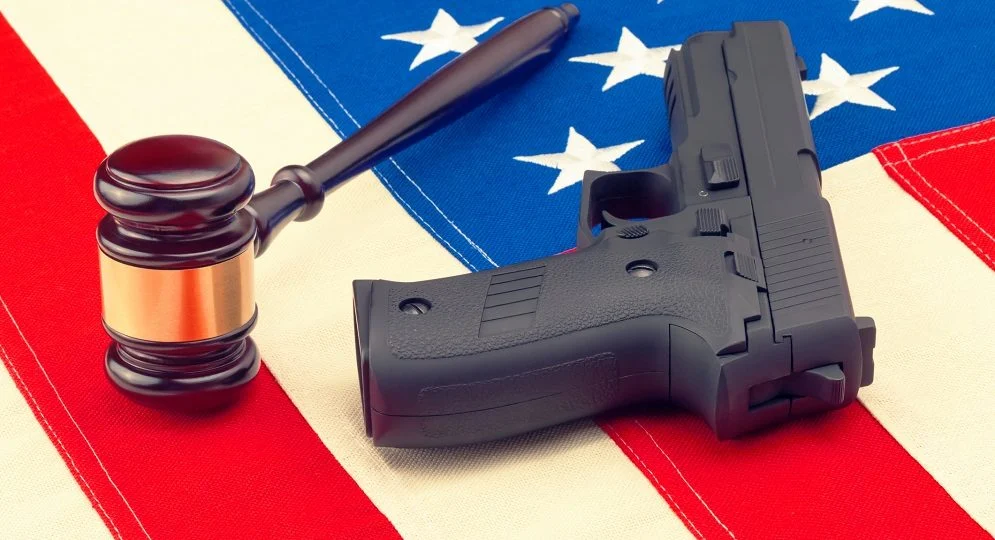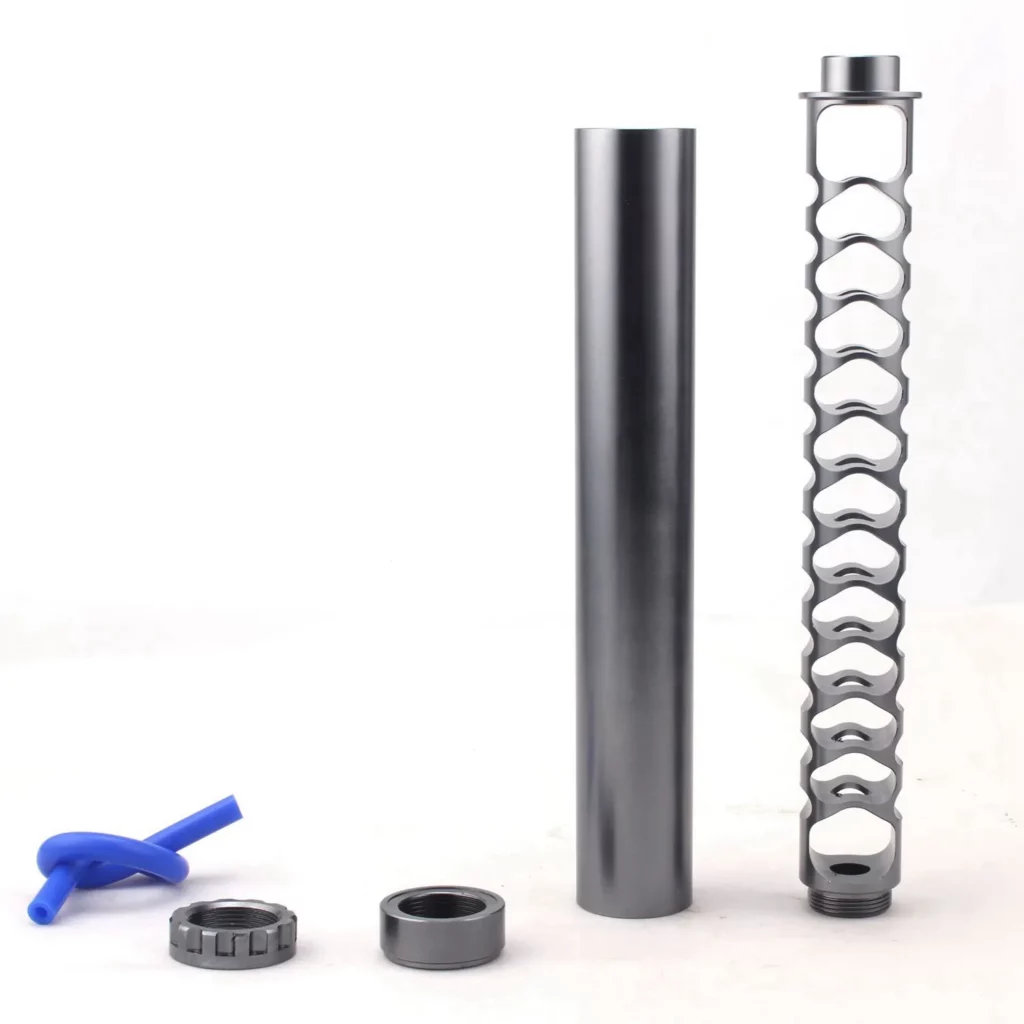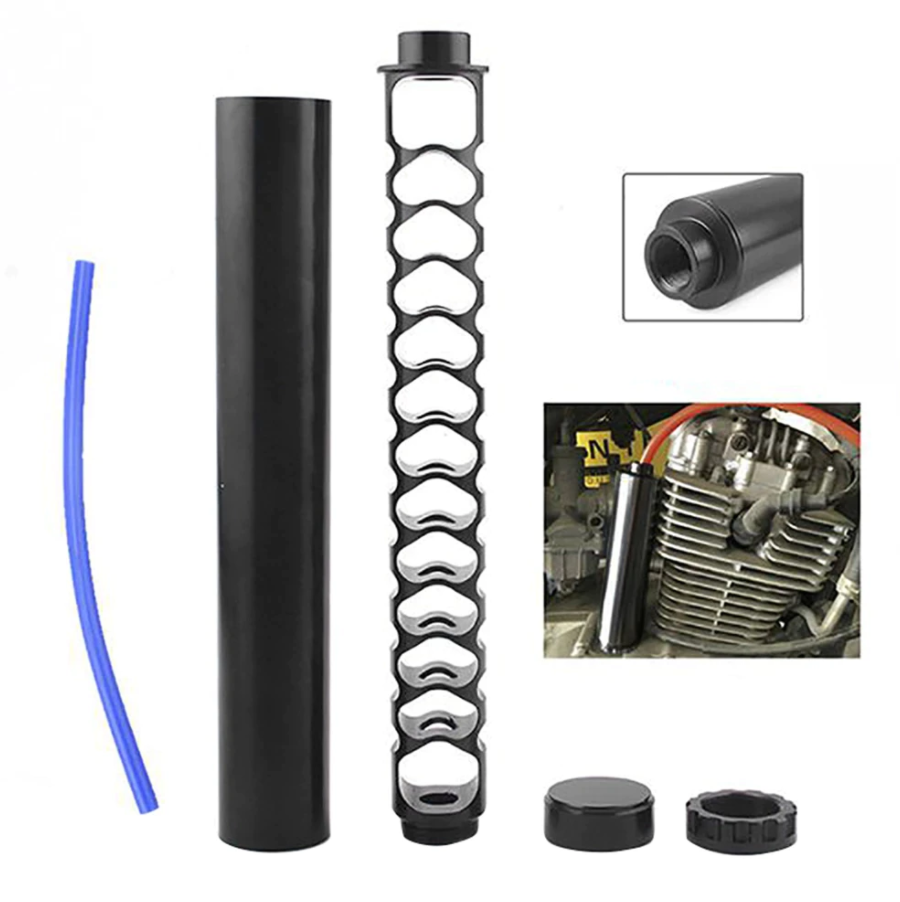Table of Contents
Solvent traps are devices used in the process of firearm maintenance to collect cleaning solvents and prevent them from contaminating the surrounding area. It is important to be aware of certain key aspects regarding solvent traps to ensure their proper and lawful use. This article presents ten essential points to understand about solvent traps, including their purpose, legality, compatibility, safety precautions, and more. By familiarizing yourself with these important considerations, you can make informed decisions and ensure responsible usage of solvent traps for firearm maintenance.
Purpose and Function:
Solvent traps serve a specific purpose in the realm of firearm maintenance. Their primary function is to collect cleaning solvents, preventing them from spilling or spreading, and keeping the work area clean and organized.
During the cleaning process, solvents are applied to dissolve and remove fouling, residues, and debris from the barrel and other parts of the firearm. The solvent trap acts as a receptacle, capturing the solvent as it flows out of the barrel or other areas being cleaned. This containment helps prevent environmental contamination and facilitates easy disposal of the used solvents.
Solvent traps are designed with a tube-like structure and threaded end caps to securely attach to the muzzle or compatible parts of a firearm. Some traps may include filters or screens to enhance their functionality. These traps efficiently collect and contain cleaning solvents, promoting a cleaner and safer maintenance process. By handling and disposing of solvents effectively, they minimize the risk of spills and exposure. Moreover, solvent traps aid in maintaining an organized cleaning area and reducing the mess associated with firearm maintenance.
don’t modify them into suppressors without proper licensing. Understand and follow their intended purpose for responsible firearm maintenance.
Legality and Compliance:

Navigating the legal landscape surrounding solvent traps is a crucial aspect of responsible firearm ownership. Understanding the laws and regulations in your jurisdiction is essential to ensure compliance and avoid potential legal issues.
The legality of solvent traps can vary from one place to another, as different countries, states, or localities may have specific regulations governing their possession and use. It is essential to thoroughly research and familiarize yourself with the laws relevant to your location.
Solvent traps are legal for collecting cleaning solvents, but converting them into suppressors without proper licensing is illegal.
If you are interested in converting a solvent trap into a suppressor, it is essential to follow the proper legal channels. To legally convert a solvent trap into a suppressor, obtain the required licensing and permits from authorities like the ATF.
It is important to emphasize that laws can change, and what may be legal today could become illegal in the future. Regularly staying updated on the laws and regulations about solvent traps and suppressors are crucial to ensure ongoing compliance.
To ensure complete legality and compliance, it is advisable to consult with legal experts, firearm attorneys, or regulatory agencies in your jurisdiction. Experts offer current, location-specific information, guiding you through legal requirements and obligations related to solvent traps.
By prioritizing legality and compliance, you can enjoy responsible firearm ownership while avoiding legal complications or unintended violations of the law. Remember, it is always better to err on the side of caution and seek proper guidance when it comes to the legal aspects of owning and using solvent traps.
Not a Suppressor:
It is important to understand that solvent traps are designed and intended for collecting cleaning solvents during firearm maintenance. They are not intended to be used or modified into suppressors, which are devices designed to reduce the sound signature of a firearm when discharged.
Using a solvent trap as a suppressor or attempting to modify it for sound suppression without the proper licensing and compliance is illegal in most jurisdictions. Suppressors are highly regulated and require specific licenses and approvals to manufacture, possess, or use.
Attempting to convert a solvent trap into a suppressor can have serious legal consequences, including criminal charges and penalties. Adhere to jurisdiction laws, using only approved and legally obtained suppressors for sound suppression purposes.
Using a solvent trap as a suppressor can also present significant safety risks. Solvent traps are not constructed to withstand the pressures and forces associated with the discharge of a firearm. Using a solvent trap as a suppressor can lead to dangerous consequences, including injury to oneself or others.
Responsible firearm owners understand the importance of adhering to the law and prioritizing safety. Use solvent traps solely for collecting cleaning solvents, and obtain legally compliant suppressors from licensed manufacturers for sound suppression.
Respecting the difference between solvent traps and suppressors ensures responsible firearm ownership and prioritizes safety for all.
Quality and Materials:

When considering a solvent trap for firearm maintenance, it is important to prioritize quality and choose materials that offer durability and reliability. The quality of the solvent trap directly affects its performance, longevity, and safety during use.
Choosing high-quality materials for a solvent trap guarantees durability and consistent performance during firearm maintenance. Aluminum and stainless steel are commonly utilized materials in solvent trap construction.
Aluminum solvent traps are lightweight and offer excellent corrosion resistance. They are favored for their portability and ease of handling during the cleaning process. However, it is essential to choose solvent traps made from high-grade aluminum to ensure strength and durability.
Stainless steel solvent traps, on the other hand, are known for their exceptional durability and resistance to corrosion. They can withstand more demanding cleaning solvents and are often chosen for their longevity and robustness.
Irrespective of the chosen material, prioritize well-crafted solvent traps from reputable companies or sellers for reliable performance. This ensures that the product meets quality standards and is less likely to fail during use.
Another aspect to consider is the threading quality and precision. The threads should be well-machined to ensure a secure and tight fit when attaching the solvent trap to the firearm. This ensures stability during cleaning and prevents any potential accidents or leakage.
While a high-quality solvent trap may come with a higher initial cost, it can prove cost-effective in the long term. Investing in a reliable and durable tool ensures efficient firearm maintenance, potentially saving you money over time.
Prioritizing quality and selecting solvent traps made from reliable materials instills confidence in their performance and durability. This enhances the overall firearm maintenance experience, ensuring a reliable and long-lasting product.
Size and Compatibility:

When selecting a solvent trap for firearm maintenance, it is crucial to consider the size and compatibility with your specific firearm. Choosing the right size ensures that the solvent trap effectively collects cleaning solvents and fits securely onto your firearm’s barrel or other compatible parts.
Solvent traps are available in various sizes to accommodate different calibers and firearm types. It is essential to match the size of the solvent trap with the caliber of your firearm to ensure optimal performance and functionality.
Using a solvent trap that is too small for your firearm’s caliber may result in inadequate solvent collection and potential leakage during the cleaning process. On the other hand, using a solvent trap that is too large may not provide a secure fit, leading to instability and potential safety issues.
To determine the appropriate size for your solvent trap, consult the specifications provided by the manufacturer or seek guidance from knowledgeable professionals. They can help you identify the correct size based on your firearm’s caliber and specific cleaning requirements.
In addition to the size, consider the overall design and compatibility of the solvent trap with your firearm. Look for solvent traps that are specifically designed for your firearm type or have universal compatibility across a range of firearms. This ensures a proper fit and reduces the risk of any potential complications or damage during use.
Maintenance:
Proper maintenance of your solvent trap is essential to ensure its continued effectiveness and longevity. Regular cleaning and upkeep not only contribute to the trap’s performance but also help maintain a safe and reliable firearm maintenance routine. Here are some key aspects to consider when it comes to maintaining your solvent trap:
1. Regular Cleaning: Just like your firearms, the solvent trap requires routine cleaning to remove residue, debris, and solvent buildup. After each use, disassemble the trap and clean its components thoroughly using appropriate cleaning agents. Ensure that all traces of solvents and contaminants are removed before reassembly.
2. Inspection for Damage: Regularly inspect your solvent trap for any signs of damage, such as cracks, dents, or loose parts. Damaged components may compromise the trap’s functionality and safety. If you notice any issues, either repair or replace the damaged parts as needed.
3. Lubrication: Apply a light coat of lubricant to the threads and moving parts of your solvent trap to prevent corrosion and ensure smooth operation. This helps maintain the trap’s functionality and ease of disassembly during cleaning.
4. Storage: When not in use, store your solvent trap in a clean, dry, and secure location. Consider using protective cases or containers specifically designed for solvent traps to prevent dust, dirt, or other contaminants from accumulating.
5. Follow Manufacturer’s Recommendations: Always follow the manufacturer’s guidelines and recommendations regarding maintenance and care. They may provide specific instructions tailored to your solvent trap model, ensuring optimal performance and longevity.
Seek Expert Advice:

Seeking expert advice is crucial when it comes to selecting, using, or modifying solvent traps. Here’s why it’s important:
1. Legal Compliance: Experts can help you understand and comply with laws and regulations specific to your jurisdiction, ensuring you stay within legal boundaries.
2. Safety Considerations: Professionals can provide valuable insights on the safe handling, installation, and maintenance of solvent traps, minimizing the risk of accidents or injuries.
3. Proper Functionality: Experts can guide you in selecting the right size, materials, and components for optimal performance and compatibility with your firearm.
4. Modifications and Suppressor Compliance: If you’re considering modifying a solvent trap into a suppressor or purchasing one, experts can advise you on legal requirements, licensing, and safety considerations.
5. Industry Knowledge: Professionals stay updated on the latest advancements, regulations, and best practices in solvent traps and firearm maintenance, providing you with accurate and current information.
Seeking expert advice ensures responsible and lawful firearm maintenance practices, allowing you to navigate the complexities of solvent traps with confidence.

